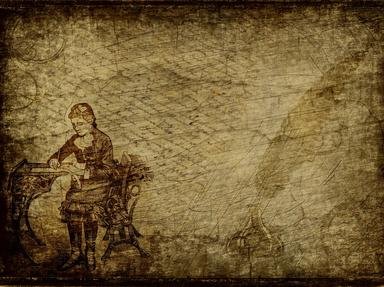Quiz Answer Key and Fun Facts
1. The opening of Act 2, and the second suite by Grieg is titled "The Abduction/Ingrid's Lament." Who, according to Ibsen's play, has abducted Ingrid?
2. After being cast off by Ingrid, Peer Gynt is at his fantasies again. He happens upon a trio of herd-girls, who mistake him for what?
3. After trying out his role among the herd-girls, Peer Gynt meets a mysterious young lady in green. Again he manages to convince her he's someone else - a prince. Upon hearing that she is the daughter of the Mountain King, he decides to marry her. But upon entering the mountain, the mountain trolls are not too happy with the idea. Here comes the most famous number of the suite and the play's music, "In the Hall of the Mountain King". The trolls call for Gynt's death, saying: "Slay him! The ____ has defiled the Mountain King's fairest maid!"
4. The mountain trolls finally get their shot at Peer, but after a long night, the mountain collapses under the force of a mysterious... thing, the Boyg. Upon being asked: "Who are you?" The Boyg answers:
5. Only one musical number graces the third act of the play, and it is also set in the first suite - titled "Aase's ____"
6. The next number, "Morning Mood", is usually used as music depicting a scene in some field or advertising some drink. In fact, the scene it appears in in the play is set at sea.
7. Of the eight musical numbers in the "Peer Gynt" suites, four are from the fourth act. The next number in the play is the "Arabesque".
True or false: Peer Gynt has a singing part in this number.
8. The last movement of the second suite is titled "Solveig's Song". Besides in the suite and in the play, how was the song treated elsewhere in the musical literature?
9. Peer Gynt attempts a return home. But before he can make it home, he has a few more fantastic obstacles in his way. After a shipwreck and a haunting night scene (with rich and unheard of harmonies for its time), Grieg finally makes it to native soil. There is a church service being conducted nearby - a hymn is being sung. Which Christian holiday is being celebrated?
10. To Peer Gynt's great fortune, he finally arrives home, and finds there his old beloved Solveig on her way to church. What does Solveig sing as the curtain drops on Peer Gynt's story (and his life)?
Source: Author
Arpeggionist
This quiz was reviewed by FunTrivia editor
agony before going online.
Any errors found in FunTrivia content are routinely corrected through our feedback system.
